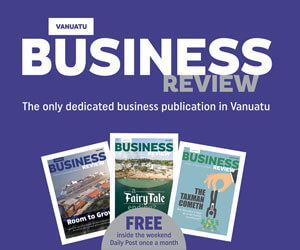COVID-19 and Logistics
March 28, 2020 8:00 am | Posted in Opinions | Share now TwitterFacebook
By Chris Kernot
The logistical outcome of the Covid 19 Virus creates conditions similar to those of Post Cyclone Pam where there is a lot of misinformation or the complete lack of it, misdirection and constantly changing conditions with opinions.
Well planned and handled Logistics really is about managing all that information to see what outcomes can be arrived at with existing resources and if those are insufficient to be aware of all the possible other options that might be available, other ways of getting things done.
It is no different in this Covid 19 case where we have had a range of decisions affecting all of us in the arena of Freight Services and some of these have impacted in different places of the logistical chain – whether it be closures or partial closures of unavoidable Government Departments and SOE, the prompt release goods from Customs Department and of course one of the major impacts is in the absence of air services which not only deliver the majority of our GDP to our shores on two legs, but all those essential small items we heavily rely upon as an island nation to keep the wheels of business turning – whether it be car parts, machinery parts, manufacturing supplies to urgent medical supplies.
Without any air services at all for the foreseeable future we have to look at other possibilities for these urgent goods and see if we can make sea services try to make up the time difference between air freight transit time and the much slower sea transit time.
The sea transit times from Australia have been consistent with roughly 2 week gaps between vessels and a short transit time from Brisbane of 5 to 6 days on fair seas.
So for airfreight and courier services which can still move we are aiming to route everything into the Brisbane region where they will be consolidated up until the last minute possible and then loaded on the vessel to Vanuatu.
Other options we looked at included our other close trading nations of Fiji and New Zealand and while Fiji is still a great local option at only 38 hours or so transit – it is harder to get space into Fiji from most places except from NZ.
NZ has just become a lot harder to hub cargo through because the service provider has recently opted to change the former direct service to being a transhipment service over Fiji which increases the transit time as well as the risk of missing the connection (which does happen sometimes but thankfully not too often)
The other option is to look at using a charter flight which is far more high risk for a few reasons including the risk of ever-changing rules for entry into Vanuatu (and possibly other countries that might be included on the route) and the cost of a charter is very high so the payload required to cover the costs must be reached to avoid a financial calamity.
A situation such as the current is a great opportunity for those of us who are logistically minded to stretch our imaginations and bend the ears of our contacts to find solutions that will work for all. Myself, I enjoy the challenge of doing so.
This is an “opinion piece” and not the opinion of the publisher










